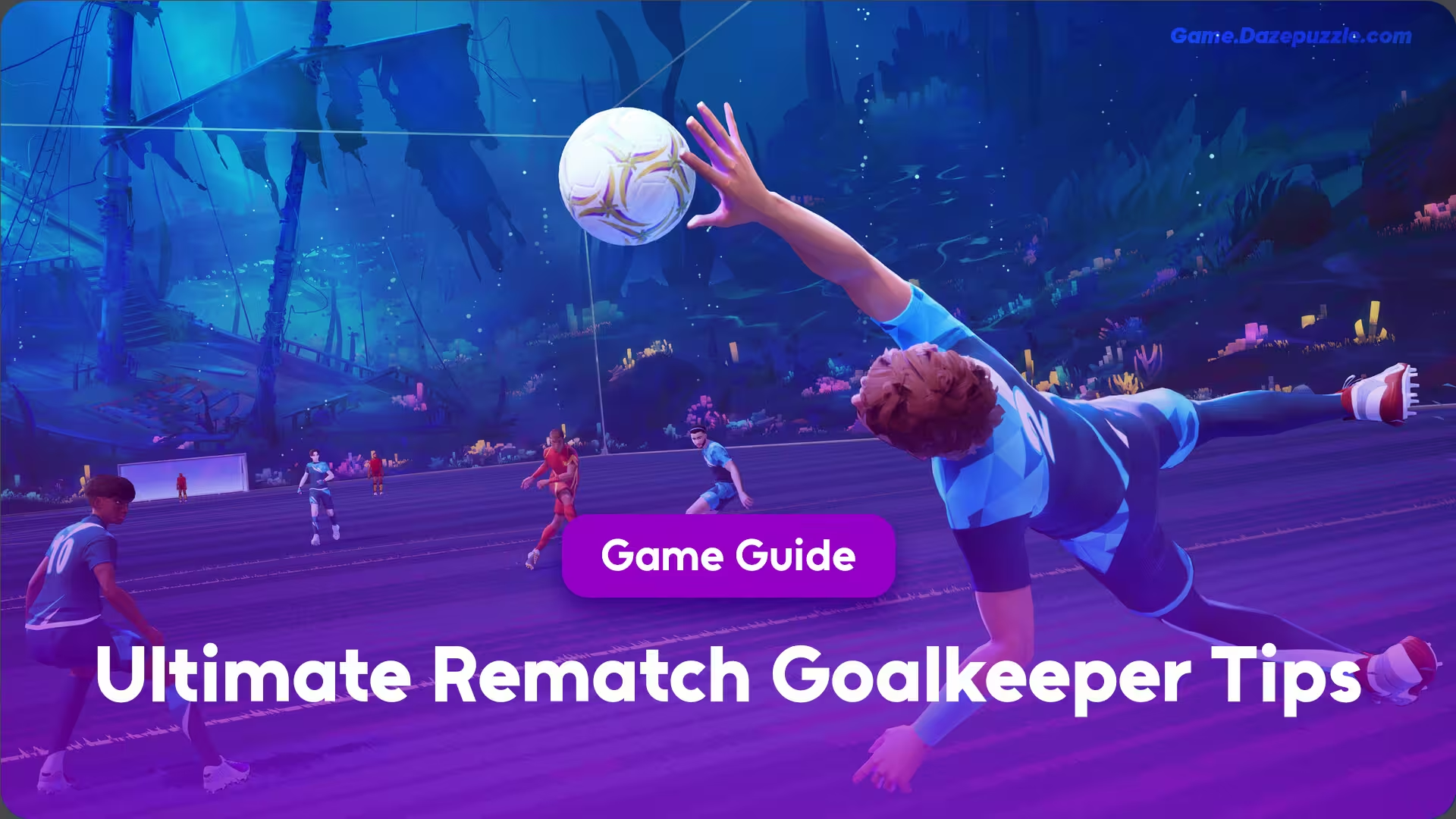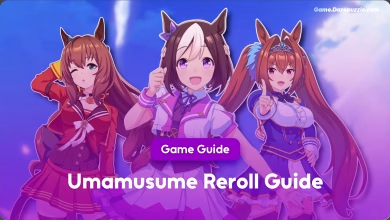There’s a unique pressure that comes with playing goalkeeper in Rematch. It’s a feeling that other positions don’t quite understand. Every other player gets to chase glory, stringing together slick passes and firing off highlight reel goals. But you? You stand on that last line of defense, the final barrier between a comfortable lead and a soul crushing defeat. Every save can feel routine, but every goal conceded feels like a personal failure. It’s a tough gig, no doubt about it. But here’s the secret: being a great goalkeeper isn’t some magical talent you’re born with. It’s a skill. It’s a craft that you can learn, practice, and master.
This guide is here to give you the tools and knowledge to do just that. We’re going to break down everything you need to know, from the core philosophy of a keeper to the nitty gritty mechanics and advanced strategies that separate the good from the great. If you’re tired of feeling helpless in the net and want to become the dependable, game saving wall your team can rely on, you’ve come to the right place. These are the Rematch goalkeeper tips that will transform your game.
You might also like this: +15 Essential Rematch Tips and Tricks to Master the Game
What’s In Our Ultimate Rematch Goalkeeper Tips
The Goalkeeper’s Creed: More Than Just Stopping Balls
Before you even think about which button to press, you need to get your head in the game. The best goalkeepers play a mental game that’s just as important as their physical reactions. It’s about cultivating a specific mindset that allows you to stay in control, no matter how chaotic the match gets.
Patience is Your Superpower
The single biggest mistake a new goalkeeper makes is committing too early. You see the attacker winding up for a shot, and your instincts scream at you to DIVE. Attackers know this. They live for this. They’ll use a little shoulder fake or a stutter step to bait you into a premature dive, and then calmly slot the ball into the wide open net you just vacated.
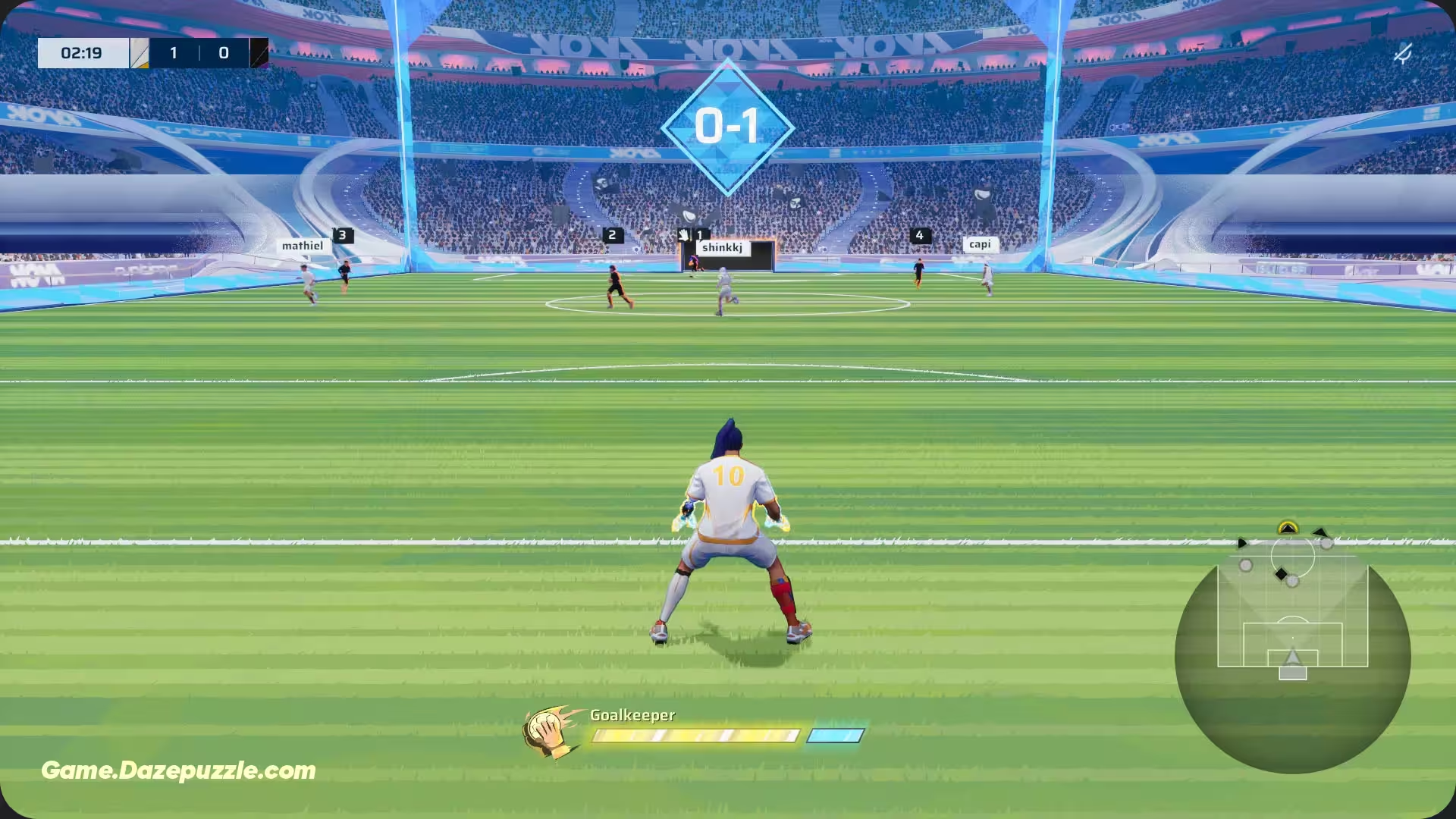
You have to fight that instinct. The golden rule of goalkeeping is to make the attacker make the first move. Hold your ground. Stare them down. Wait until they have fully committed to their shot before you react. You almost always have more time than you think. The longer you wait, the more you shrink the goal from their perspective and the more you force them into a decision. Let them panic, not you.
Staying Ice Cold Under Pressure
Rematch can get messy. A sudden turnover, a lightning fast counter attack, the ball pinging around in front of your goal it’s pure chaos. In these moments, a great goalkeeper is an island of calm in a sea of madness. Panic leads to bad decisions, missed saves, and easy goals for the opposition.
When things get hectic, take a mental breath. Focus on your positioning above all else. Trust the fundamentals that you’ve practiced. You can’t stop every single shot, especially when you’re facing a 2v1 or 3v1 situation. Don’t get tilted by goals that were nearly impossible to save. Shake it off, reset your mental state, and focus on the next play. A keeper with a short memory is a successful keeper.
Getting Your Hands Dirty: Core Goalkeeper Controls
Once your mindset is right, you need to master the tools of the trade. Knowing your controls inside and out is non negotiable. These actions need to become second nature, allowing you to react instantly without having to think about the buttons.
The Defensive Stance: Your Default Position
This is your home base, your bread and butter. By holding down the Defensive Stance button (LT/L2), you put your keeper in a ready position, squared up to the ball. You should be in this stance anytime an attacker is in a threatening position. It’s crucial for a couple of key reasons.
First, it ensures you can actually collect the ball. If you’re not in the defensive stance, a shot can literally pass right through your player model. This stance “activates” your ability to properly block or catch the ball. Second, it automatically keeps you facing the play and allows for quick, shuffling lateral movements, which are perfect for mirroring an attacker’s movements and blocking off passing or shooting lanes. While in this stance, you can also use the “Defensive Dash” (A/X) for a quick burst of speed to cover the goal line, which is essential for saving shots aimed at the far post.
The Art of the Dive: Reaction, Not Prediction
The dive (Y/Triangle) is your most spectacular tool, but it’s also your riskiest. A dive is for shots that are truly out of your reach from the defensive stance. Think of it as your emergency button. The key, as we discussed in the mindset section, is that a dive must be a reaction to a shot, not a prediction of where you think the shot will go. Once you dive, you are completely committed. If you guess wrong, it’s a free goal. Wait to see the ball leave the attacker’s foot, then use your stick to aim your dive and make that highlight reel save.
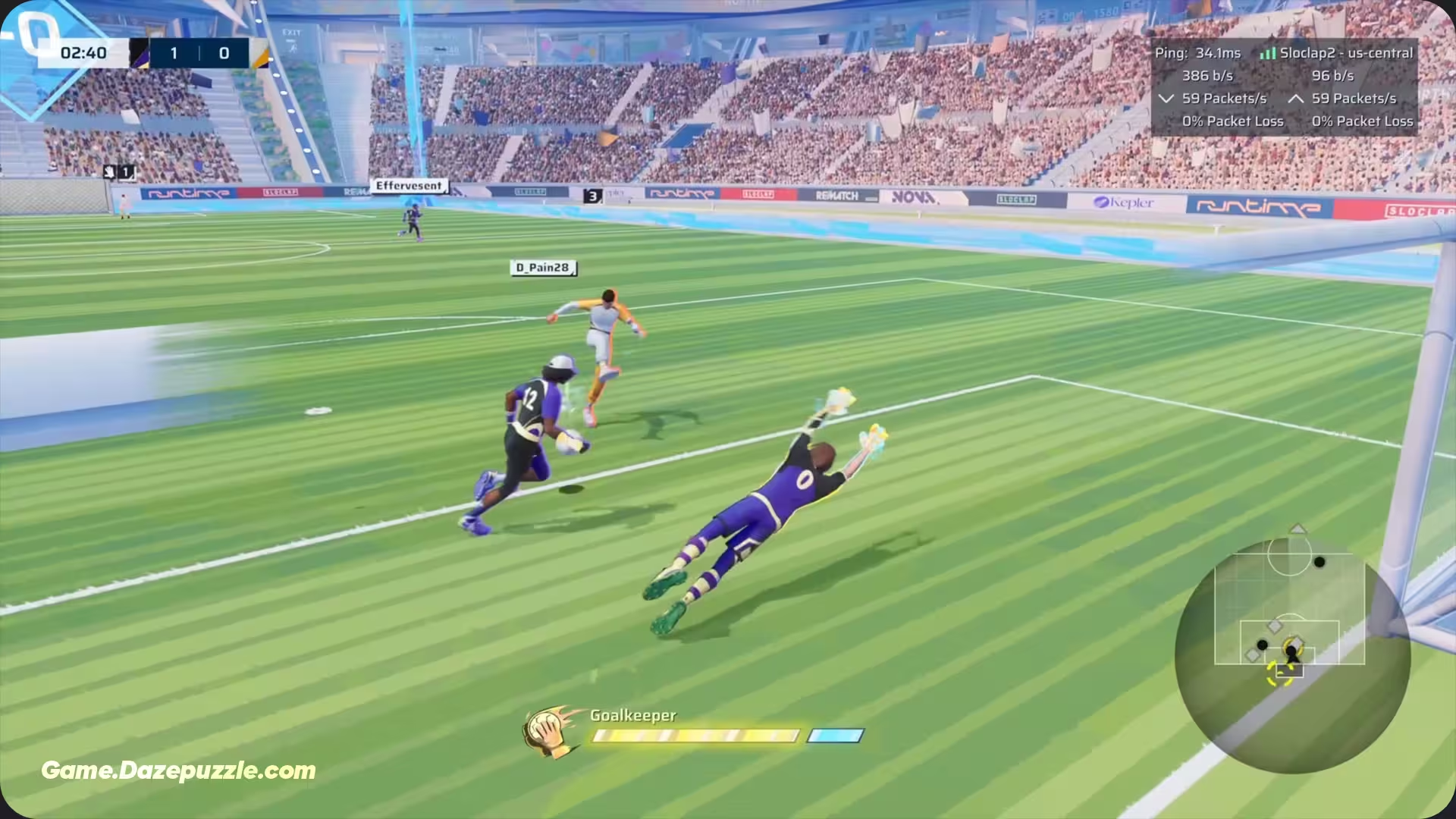
The Last Resort: Using the Sliding Tackle
Goalkeepers in Rematch can perform a sliding tackle inside their own penalty box. This is a high risk, high reward maneuver. A poorly timed tackle will take you completely out of the play, leaving the goal wide open. However, it can be an incredibly effective last ditch effort. The ideal time to use it is when an attacker has already beaten you with a dribble and is about to take an easy shot on an open net. A well-timed slide can knock the ball away and defuse the situation entirely. Just be sure you’re going to connect, because if you miss, you won’t get a second chance.
Lesser Known Mechanics: The Short Jump
One of the less obvious but useful tools at your disposal is a small, controlled jump. This is performed by pressing the Lob Modifier button along with the tackle button. This isn’t a massive leap, but rather a small hop that’s perfect for intercepting or blocking floated chip shots or high passes aimed over your head. It’s a situational move, but a very effective one for surprising an attacker who thinks they’ve cleverly chipped you.
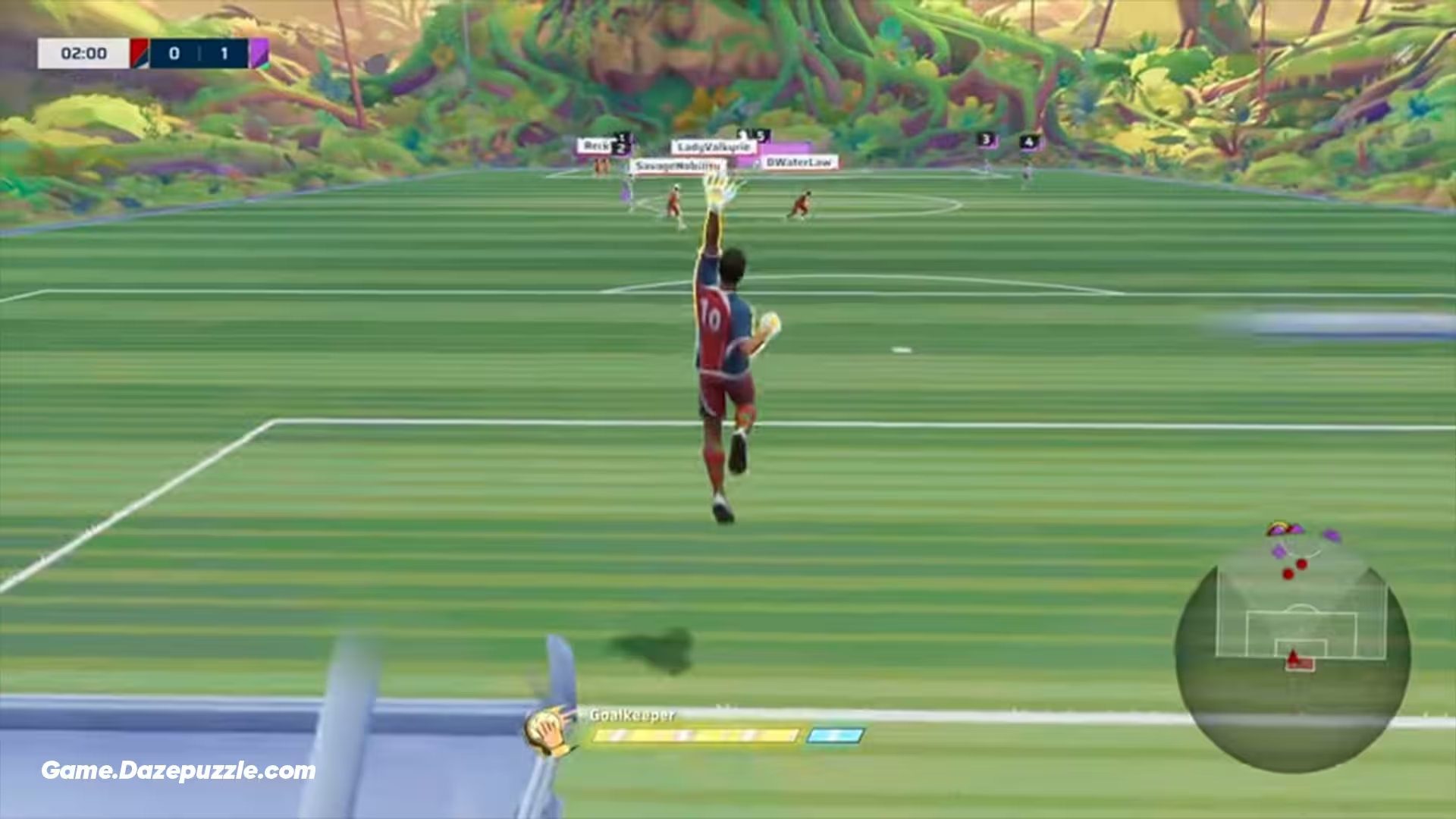
Be in the Right Place: The Gospel of Positioning
Here’s a truth about goalkeeping: you save most shots with your feet, not your hands. Excellent positioning means you’re already standing where the ball is going to go, turning a potentially difficult save into a routine block. This is the single most important technical skill to develop.
Cutting Down the Angles: Basic Geometry to Save Goals
When an attacker is running at you in a 1v1, your best defense is to close them down. Don’t just stay glued to your goal line. By moving out towards the attacker, you reduce the amount of open goal they have to shoot at. It’s simple geometry. The closer you get to them, the less space they have on either side of you to place the ball. This forces them to make a perfect shot, increasing the chance they’ll miss the target or shoot it right at you. The key is to find the sweet spot come out far enough to narrow the angle, but not so far that they can easily dribble around you.
The Sweeper Keeper Role: Your Second Job
Your responsibility doesn’t begin and end on the six yard line. When the ball is deep in your opponent’s half, you should position yourself near the top of your penalty box, or even slightly outside of it. This is the “sweeper keeper” role. From this advanced position, you can intercept long through balls that are played over your defense, effectively snuffing out a counter attack before it even begins. It’s an aggressive style, but it keeps the pressure on your opponents and supports your defenders.
Your Best Friend, the Minimap
Good situational awareness separates average keepers from great ones. Your eyes should be constantly flicking down to the minimap. The minimap tells you everything you need to know: the positions of off-screen attackers, potential passing lanes they’re trying to exploit, and where your own defenders are. It allows you to anticipate the play instead of just reacting to it. If you see two attackers setting up for a cross, you can begin to position yourself accordingly before the pass is even made. Make checking the minimap a constant habit.
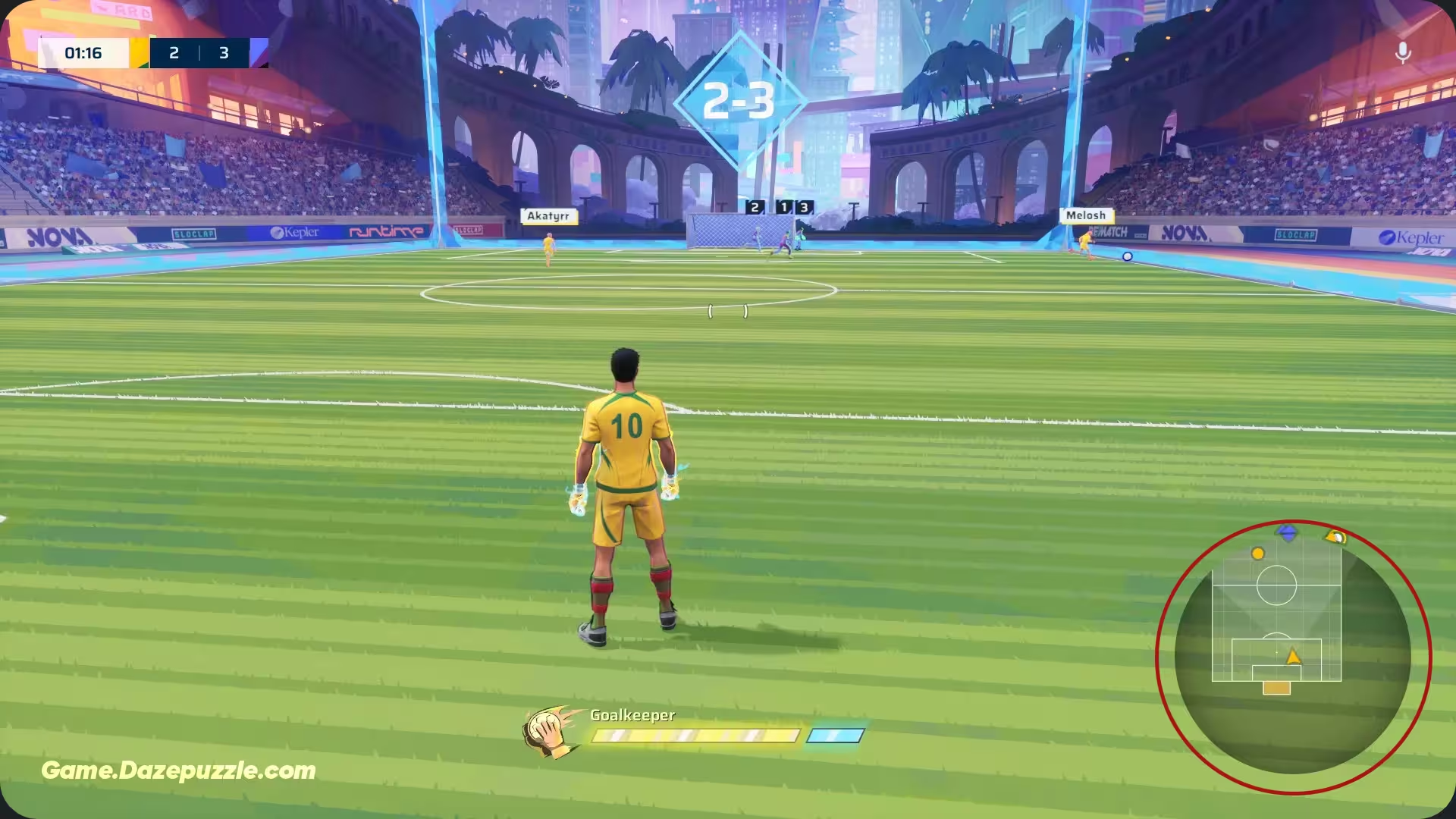
Handling Threats: How to Counter Common Attack Patterns
Knowing the theory is one thing, but applying it in the heat of battle is another. Let’s look at some of the most common offensive tactics you’ll face in Rematch and how to shut them down.
Defending the 1v1 Showdown
The 1v1 is the ultimate test of a goalkeeper’s nerve. As we’ve covered, your primary strategy is to hold your ground and narrow the angle. Stay in your defensive stance and shuffle with the attacker. Don’t let them bait you. You can even play some mind games of your own. A small, quick feint to one side can sometimes be enough to convince the attacker to shoot to the other side right where you were planning to be anyway. The goal is to make the attacker second guess themselves.
The Infamous Backboard Ricochet Cheese
This is a very common tactic, especially at lower and mid ranks. An attacker will intentionally fire the ball hard off the backboard above your goal, hoping to score on the rebound. It’s a cheesy but effective strategy if the keeper doesn’t know how to handle it. Here is the step by step counter:
- Do not react to the initial shot. This is the most important step. The shot on the backboard is a fake. Do not dive for it.
- Stay calm and watch the ground. A blue landing indicator will appear on the ground, showing you exactly where the ball is going to land.
- Position yourself on the indicator. Move to the spot before the attacker can get there.
- Jump and clear the ball. As the ball comes down, jump to intercept it in the air, either catching it or punching it away from danger before the opponent has a chance to touch it.
By following these steps, you can turn one of the most annoying tactics in the game into a routine, stress free clearance.
Dealing with Crosses and Aerial Threats
Defending against crosses is all about anticipation and positioning. Use your minimap to see the play developing. Try to read the body language of the passer to anticipate where they’re aiming. Your goal is to be in a position that allows you to either step forward and claim the cross in the air or be set and ready for a potential header or volley. It’s a balancing act. You need to cover the potential shot at the near post while also being ready to move across the goal for a far post header. This is where communication with your defenders becomes vital.
Starting the Counter Attack: Smart Ball Distribution
Your job isn’t over when you make the save. A good goalkeeper can immediately turn a defensive stop into a dangerous counter attack with a single, intelligent pass.
Safety First: The Golden Rule of Distribution
The absolute number one priority when you have the ball is to not create a new problem for your team. Don’t force a risky short pass to a defender who is being pressured. And never, ever throw or pass the ball towards your own goal line, as this can sometimes result in an own goal. The objective is to relieve pressure and safely retain possession for your team.
Lob Passes Are Your Best Friend
The safest and most effective way to distribute the ball is with a lob pass. A simple ground pass is easily intercepted by a nearby attacker. A lobbed pass, however, sails over their heads and can find your teammates in open space downfield. Look for an open midfielder or a forward making a run. A well placed lob can bypass the entire opposition press and instantly put your team on the offensive.
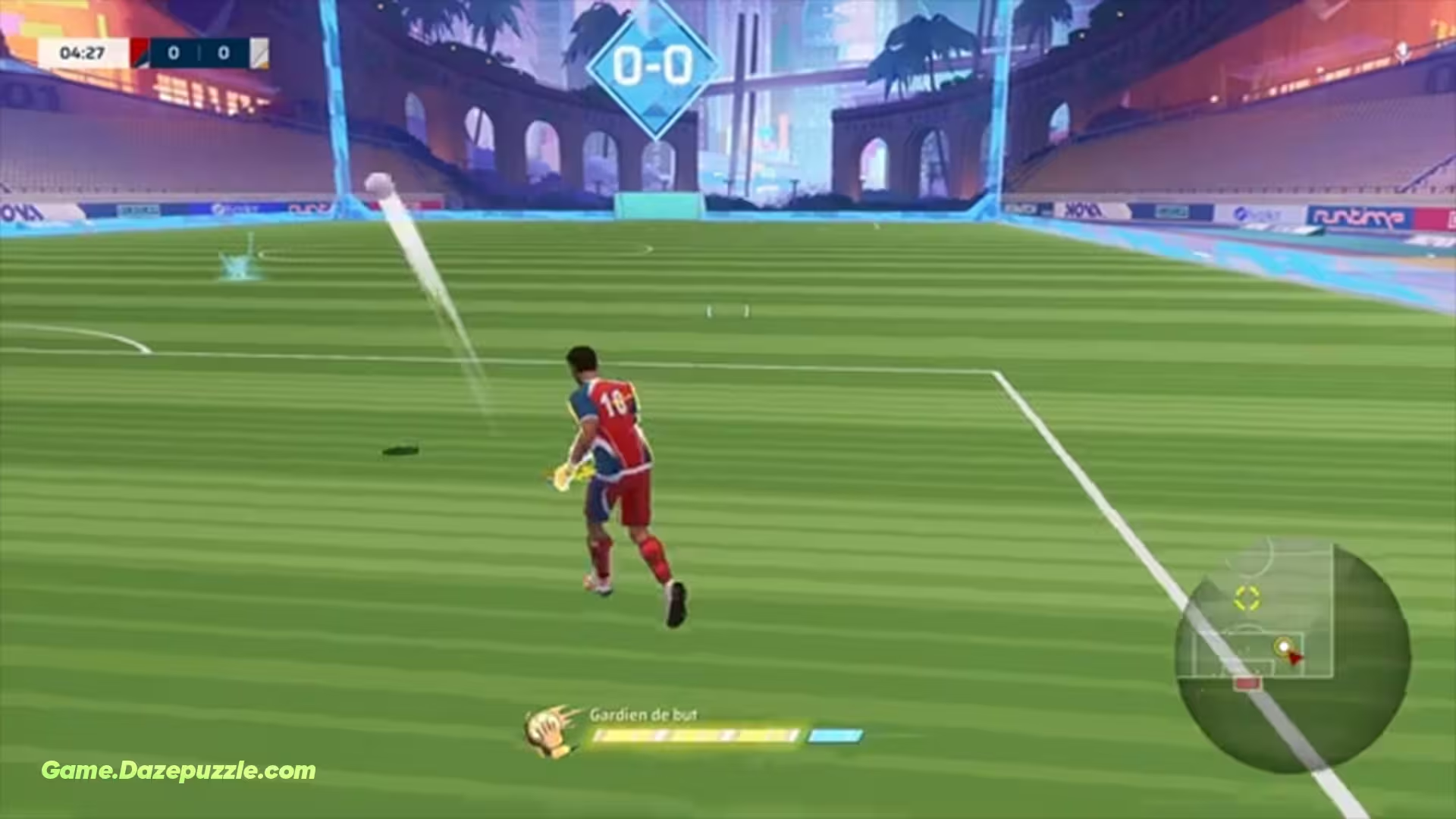
Building a Fortress: Synergy with Your Defenders
You are not alone on the pitch. You and your defenders are a single unit, and you need to work together. Trust is essential. Trust that your defender will mark their player, which frees you up to focus on the player with the ball. Communicate with them (if possible) about who is covering whom and which areas of the goal you are responsible for. A defense that works in harmony is incredibly difficult to break down. Let your defenders handle the immediate challenges while you maintain the overarching view of the play, ready to sweep up any threats that break through.
Conclusion And Final Thoughts
Becoming a top tier goalkeeper in Rematch is a journey. It takes practice, patience, and a willingness to learn from the goals you concede. By embracing the right mindset, mastering the controls, perfecting your positioning, and learning to read the game, you can transform from a liability into the most valuable player on your team. Every save you make is a statement. It demoralizes the opponent and energizes your squad. Now, take these tips, get back out on the field, and start building your legacy as a wall they can’t break.
Thanks for keeping up with Game.Dazepuzzle.com

